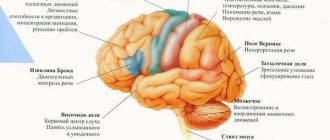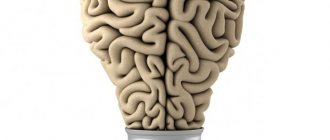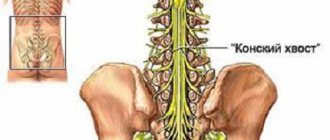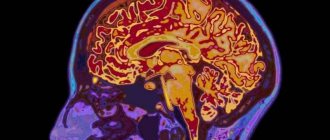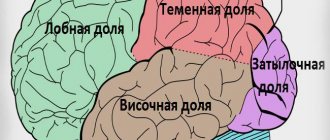I. Sensory zones (regions) of the cerebral cortex
· They are central (cortical)
sections of the analyzers, sensitive (afferent) impulses from the corresponding receptors approach them
· Occupy a small part of the cerebral cortex (up to 20%)
v The size of the zone depends on the number of neurons that perceive irritation from certain receptors (the more cells, the finer the analysis of irritations, the higher the sensitivity of the body area)
v When the sensory areas of the cortex are destroyed, a violation of sensitivity occurs (blindness, deafness, etc.) while maintaining the integrity of the peripheral parts of the analyzers (eyes, ears, skin, etc.)
1. Somatosensory zone - area of the skin
(touch, temperature, pain, vibration, pressure, humidity),
visceral
(sensitivity of internal organs),
proprioceptive
(muscle, joint, tendon sensitivity of receptors irritated by movement) - located in
the posterior central gyrus of the parietal lobe
v The right hemisphere receives impulses from the left half body, and to the left - from the right
v The sensory area of the hand is the largest, followed by the vocal apparatus and face. The smallest are the sensory areas of the torso, thigh, and lower leg, which corresponds to their physiological significance
2. Sensory visual zone - localized in the occipital lobe in the right and left hemispheres (receptors from the retina come to this zone; forms an incomplete decussation); bilateral damage to this zone leads to complete loss of vision
3. Sensory auditory zone – located in the temporal lobe of the left and right hemispheres
v Conducting pathways from the receptors of the organ of Corti of the cochlea, both on the left and on the right side, approach each hemisphere (the emergence and awareness of sound information). Processes sensitive information from the vestibular apparatus and creates a sense of body position in space
v With bilateral damage to this zone, complete deafness occurs; with damage in the left hemisphere - musical deafness (recognition of motives) and verbal deafness (the patient ceases to recognize the meaning of words); irritation of this area or inflammation causes auditory hallucinations
4. Sensory taste zone - localized in the lower part of the posterior central gyrus of the parietal lobe of the hemispheres (impulses from the taste buds of the mouth and tongue (both on the left and right side) approach it); damage to this zone leads to loss or distortion of taste sensations
5. Sensory olfactory zone - localized in the hypocampal gyrus of the limbic system in the depth of the lateral sulcus - the insula (impulses from the olfactory receptors of the mucous membrane of the nasal cavity approach it); bilateral damage leads to complete loss of smell ( anosmia)
)
II. Motor (motor) zones of the cerebral cortex (areas, when irritated, movement of skeletal muscles occurs)
– localized in
the anterior central gyrus of the frontal lobe hemispheres
· Signals that regulate voluntary movements of skeletal muscles are formed here
(when different parts of this area are irritated, contractions of individual muscles occur)
v If the area of the anterior central gyrus is damaged, immobilization occurs - paralysis, despite the functional usefulness of the muscles
v They connect to sensory areas, as a result of which, when the sensory area is irritated, along with sensation, movement occurs, and together with movement, sensation occurs
v The representation of the muscles of various parts of the body corresponds to the representation of the somatosensory zone in the posterior central gyrus (the size of the cortical motor zone is proportional not to the mass of the muscles, but to the accuracy of movements; the zone that controls the movements of the hand, tongue, and facial muscles is especially large)
v The motor pathways from both hemispheres form a cross, so when the motor zone on the right side of the cortex is irritated, a contraction of the muscles on the left side of the body occurs and vice versa
v Impulses from the motor zones of the cerebral cortex enter the motor neurons of the anterior horns of the gray matter of the spinal cord along descending pathways and only then into the muscles
· The motor and sensory zones, located on both sides of the central sulcus, represent a single functional formation, and they are often combined under the name sensorimotor zone
8.7.2. Sensory cortical areas
8.7. NEW CORTEX
The new cortex (neocortex) is a layer of gray matter with a total area of 1500-2200 cm2, covering the cerebral hemispheres; it makes up about 72% of the total area of the cortex and about 40% of the mass of the brain. There are about 14 billion neurons in the cortex, the number of glial cells is about 10 times more. The cerebral cortex is phylogenetically the youngest neural structure; in humans, it carries out the highest regulation of body functions and psychophysiological processes that provide various forms of behavior.
8.7.1. STRUCTURAL AND FUNCTIONAL CHARACTERISTICS
A. Neural organization of the neocortex.
In the direction from the surface to the depths of the crust, 6 horizontal layers are distinguished.
I - the molecular layer has very few cells, but a large number of branching dendrites of pyramidal cells, forming a plexus located parallel to the surface. Afferent fibers coming from the associative and nonspecific nuclei of the thalamus form synapses on these dendrites.
II - the outer granular layer is composed mainly of stellate cells and partially small pyramidal cells. The fibers of the cells of the second layer are located mainly along the surface of the cortex, forming cortico-cortical connections.
III - the outer pyramidal layer consists mainly of medium-sized pyramidal cells. The axons of these cells, like granule cells of layer II, form cortico-cortical associative connections.
IV - the inner granular layer is similar in the nature of the cells (stellate cells) and the arrangement of their fibers to the outer granular layer. In this layer, afferent fibers have synaptic endings coming from neurons of specific nuclei of the thalamus; The highest capillarization density is noted here.
V - the inner pyramidal layer is formed by medium and large pyramidal neurons, and Betz's giant pyramidal cells are located in the motor cortex. The axons of these cells form the efferent corticospinal and corticobulbar motor tracts.
VI - layer of polymorphic cells is formed mainly by spindle-shaped cells, the axons of which form corticothalamic tracts.
Assessing the afferent and efferent connections of the cerebral cortex in general, it can be noted that in layers I-IV the perception and processing of signals entering the cortex occurs. On the contrary, efferent pathways leaving the cortex are formed predominantly in layers V-VI. A more detailed division of the cortex into various fields was carried out on the basis of cytoarchitectonic features (shape and arrangement of neurons) by K. Brodmann (1909), who identified 52 fields; many of them are characterized by functional and neurochemical features.
Histological evidence shows that the elementary neural circuits involved in information processing are located perpendicular to the surface of the cortex. Electrophysiological studies
[Mountcastle V., 1957] with immersion of microelectrodes perpendicular to the surface of the somatosensory cortex showed that all neurons encountered along the way respond to a stimulus of only one quality (type) (for example, tactile). On the contrary, when the electrode was immersed at an angle, neurons of different modalities came across its path. It was concluded that in the cerebral cortex there are functional associations of neurons located in a cylinder with a diameter of 0.5-1.0 mm. These associations were called neural columns.
They are found in the motor cortex and in various areas of the sensory cortex. Adjacent neural columns can interact with each other.
B. Corticolization of functions -
an increase in phylogenesis of the role of the cerebral cortex in the analysis and regulation of body functions and subordination to the cortex of the underlying parts of the central nervous system. For example, the regulation of motor functions such as locomotion (jumping, walking, running) and righting reflexes in lower vertebrates (amphibians) is completely provided by the brain stem; removal of the cerebral hemispheres practically does not change them. In cats, transection of the trunk between the midbrain and diencephalon does not significantly affect the righting reflexes, but disrupts locomotion in the acute period, which is subsequently partially restored. Switching off the cerebral cortex in monkeys and humans leads to the loss of not only locomotion, but also righting reflexes.
B. Localization of functions in the cerebral cortex
intensively studied in clinical and experimental medicine since the mid-19th century. When developing this problem, two opposite concepts were formulated: narrow localizationism and functional equivalence (equipotentiality) of various cortical structures. The modern concept of localization of functions is based on the principle of multifunctionality (but not equivalence) of cortical fields. The property of multi-functionality allows one or another cortical structure to be involved in supporting various forms of activity, while realizing the main, genetically inherent function of it [Adrianov O.S., 1976]. The degree of multifunctionality of different cortical structures is not the same. In the fields of the associative cortex it is higher than in the primary sensory fields. Multifunctionality is based on the multichannel entry of afferent excitation into the cerebral cortex, the overlap of afferent excitations, especially at the thalamic and cortical levels, the modulating influence of various structures (for example, nonspecific thalamus, basal ganglia) on cortical functions, the interaction of cortical-subcortical and intercortical paths of excitation. The results of studying the localization of functions allowed scientists in the middle of the 20th century. divide the cerebral cortex into different functional areas (cortical mapping). Detailed functional maps (for example, K. Kleist, 1959) are used in neurological practice, but one must keep in mind the simplified nature of these diagrams. One of the most well-known options for the functional division of the cerebral cortex is the separation of sensory, associative and motor areas in it.
These are the zones into which sensory stimuli are projected (syn.: projection cortex, cortical sections of the analyzers). They are located predominantly in the parietal (fields 1-3), temporal (fields 21, 22, 41, 42) and occipital (fields 17-19) lobes. Afferent pathways to the sensory cortex come predominantly from the relay sensory nuclei of the thalamus - the ventral posterior lateral (VPL) and medial (VPM).
Areas of the sensory cortex, irritation or destruction of which causes clear and
permanent changes in the body's sensitivity are called primary sensory areas
(nuclear parts of analyzers, according to I.P. Pavlov).
They consist predominantly of unimodal neurons and form sensations of the same quality. In the primary sensory zones there is usually a clear spatial (topographic) representation of body parts and their receptor fields. Surrounding the primary sensory areas are less localized secondary sensory areas, whose multimodal
The most important sensory areas are the parietal cortex of the postcentral gyrus and the corresponding part of the paracentral lobule on the medial surface of the hemispheres (fields 1-3). This
area is designated somatosensory area
I. Here there is a projection of skin sensitivity on the opposite side of the body from tactile, pain, temperature receptors, interoceptive sensitivity and sensitivity of the musculoskeletal system from muscle, joint, and tendon receptors. The projection of the head and upper parts of the torso is located in the inferolateral areas of the postcentral gyrus, the projection of the lower half of the torso and legs is in the superomedial zones of the gyrus, the projection of the lower part of the lower leg and feet is located in the cortex of the paracentral lobule on the medial surface of the hemispheres (Fig. 8.7), with the projections of the most sensitive areas (tongue, lips, larynx, fingers) have relatively large areas compared to other parts of the body. It is assumed that in somatosensory area I, in the zone of tactile sensitivity of the tongue, there is a projection of taste sensitivity.
In addition to somatosensory area I, a smaller somatosensory area II
,
located The degree of localization of body parts is less pronounced here; the projection of the face is in front and below, the arms are central, the legs are behind and above. The functions of area II are poorly understood. It is known that signals to this area come from both sides of the body and from other sensory areas of the brain, such as visual and auditory. Stimulation of area II leads to complex body movements; suggest its role in sensory control of movement.
A well-studied primary projection zone is the auditory cortex (fields 41, 42), which is located deep in the lateral sulcus (cortex of Heschl's transverse temporal gyri). In this zone, in response to irritation of the auditory receptors of the organ of Corti, sound sensations are formed that differ in volume, tone and other characteristics. There is a clear topical projection here: different parts of the organ of Corti are represented in different parts of the cortex. The projection cortex of the temporal lobe also includes the center of the vestibular analyzer in the superior and middle temporal gyri (fields 20 and 21). The processed sensory information is used to form a “body schema” and regulate the functions of the cerebellum (temporo-pontine tract).
The most important primary projection area of the neocortex is located in the occipital
The cortex is the primary visual area (cortex of part of the sphenoid gyrus and lingual lobule, area 17). Here there is a topical representation of retinal receptors. Each point of the retina corresponds to its own section of the visual cortex, while the macula zone has a relatively large area of representation. Due to the incomplete decussation of the visual pathways, the same halves of the retina are projected into the visual area of each hemisphere. The presence of a retinal projection in both eyes in each hemisphere is the basis of binocular vision. Irritation of the cortex of area 17 leads to the appearance of light sensations. Near field 17 is the cortex of the secondary visual area (fields 18 and 19). The neurons of these zones are multimodal and respond not only to light, but also to tactile and auditory stimuli.
In this visual area, a synthesis of different types of sensitivity occurs, more complex visual images and their recognition arise. Irritation of these fields causes visual hallucinations, aura (obsessive sensations), and eye movements.
The main part of the information about the environment and internal environment of the body, received in the sensory cortex, is transferred for further processing to the associative cortex.
Sensory area of the cerebral cortex
The sensory cortex is a small part of the brain located between the motor cortex and the parietal lobe. It is this part of the brain that is responsible for bodily sensations and perceptions. All our tactile, visual, auditory and olfactory impulses are born in the sensory area of the cerebral cortex. The maximum concentration of cerebrospinal fluid is achieved where we had a fontanel in childhood. Taoists believe that the hardening of this soft area begins the process by which we experience each sensation as its own. As children, we feel external stimuli, but are not able to be aware of each sensation separately.
Taoists call this area the Bai Gui cavity,
in which, when experiencing intense mental states, all sensations are concentrated and the mind can comprehend absolute purity - enlightenment of consciousness.
In Taoism, this area of the brain is stimulated both by visualizing light at the crown of the head and by gazing at it with the inner eye, the purpose of which is to increase its level of perception. This zone is important not only from the point of view of restoring youth and achieving enlightenment of consciousness, but also because it is through it that the spirit leaves the body at the moment of death.
When the sensory cortex is intensely stimulated, the body's ability to receive physical and mental sensations is greatly enhanced. This increased sensitivity to sensation is also reflected in the hypothalamus' response to intense sexual arousal; The hypothalamus sends a signal to the pituitary gland to release gonadotropins into the endocrine system.
This occurs only if the person has experienced some intense state of ecstatic nature, which underlies almost all transcendental experiences described in treatises on meditation and yoga. Sex, being a source of energy, provides the best and most effective means to experience such a state.
The spinal cord and brain are entirely surrounded by cerebrospinal fluid, and it is this fluid, according to Taoists, that is responsible for the passage of sexual energy from the kidneys to the brain. The effect of enlightenment is caused by a combination of increased blood temperature and the movement of sexual energy reaching the top of the head. Don't forget that quite a lot of this fluid is located in the sensory area of the cerebral cortex.
Both Tigresses and Taoists strive to stimulate the sensory cortex. The methods may differ somewhat, but the end goal is the same. The tigress achieves enlightenment of consciousness by absorbing male sexual energy, which in Taoist books is called the restoration of yin through yang. A Taoist man achieves enlightenment by returning sexual energy to the brain, or restoring yin through yang.
The Tigress, through full concentration on oral stimulation of the man's penis, can achieve a state of supreme receptivity, the result of which is the ability of the Tigress to absorb male sexual energy and experience spiritual transformation. The main point is to enhance the stimulation of the pituitary gland and hypothalamus so that they respond to the limit of their capabilities and produce hormones that can restore youth.
Orgasm
Having discussed how Western science and Taoist spiritual alchemy view the process of energy absorption, we can now talk in more detail about orgasm itself.
Immediately before or immediately after orgasm, the human consciousness is in a state of heightened receptivity. During orgasm, time stops and the entire nervous system focuses on sensations and the release of sexual fluids.
The more intense the orgasm, the richer and brighter the sensations and perceptions.
Orgasm also actively stimulates the occipital lobe of the brain (which controls vision) and reduces the activity of the motor cortex (which controls voluntary movements). During orgasm, we perceive and feel the world around us through highly concentrated sensations. Colors seem brighter to us, and our consciousness is filled with luminous images. The body no longer controls voluntary movements, but only makes those that contribute to orgasm. Even the auditory and speech centers of the brain are in a state of increased activity.
As for increasing the acuity of hearing and vision, many sexual failures occur precisely because the sexual partner says some inappropriate words during the orgasm of the second partner. A person at this moment is so sensitive that words of insult or disapproval sink very deeply into the consciousness and affect his sexual behavior in the future. This is why, as you will learn later, during sexual intercourse Tigress always shows deep approval of her partner’s penis, the quality of his sperm and his actions.
After orgasm, the entire body enters a state of rest, and therefore most sexologists consider it a tranquilizer. This happens because the pituitary gland, which also controls the production of calming hormones, immediately sends them to the endocrine system, which is the body's natural defense against too intense and prolonged sensations. The reaction to calming hormones is more pronounced in men than in women, since the latter’s body is better adapted to multiple orgasms; Usually, more than one orgasm is required for the pituitary gland to release calming hormones into the female body. This explains the fact that women can be very energetic after orgasm because they are still under the influence of gonadotropins.
Men can also have multiple orgasms, but this only happens when subsequent stimulation is intense enough and a certain amount of time passes between orgasm and new arousal, which is necessary for the calming hormones to lose activity. The intensity of the first orgasm determines the amount of dormant hormones released by the pituitary gland into the body.
For men who ejaculate frequently, calming hormones have less and less effect as they age. To test the effects of these hormones, a man must hold back ejaculation for two weeks or so. Then during ejaculation it will be difficult for him not to close his eyes. These calming hormones are necessary to restore male youth, so ejaculation should not occur frequently. After this, during ejaculation, these hormones will have a stronger effect on the entire endocrine system. The tigress benefits not only from her orgasm, but also from her partner's orgasm. By increasing the intensity of a man's orgasm, she can reach a state of supreme receptivity in which she absorbs both his orgasm and his sexual energy. She achieves this by concentrating entirely on the man's maximum arousal and orgasm - in the sense that all her attention is focused on his penis and sperm. Like a child excited and impatient before opening his birthday present, she moans in anticipation of his orgasm. Holding his penis at a distance of five to seven centimeters from her face, she looks directly at the head of the penis, and when the sperm is released, she imagines how the energy of his orgasm penetrates right into the top of her head. When the man finishes ejaculating, she closes her eyes and moves the pupils up and down, as if looking closely at the upper part of the brain. She turns all her attention to the feeling of the warmth of his seed on her face. With the head of his penis in her mouth, she sucks nine times (very gently and without force if the penis is too sensitive) and again imagines the energy of his penis penetrating into the top of her head.
In these practices she makes full use of her imagination. As we age and experience environmental and social pressures, we lose the ability to use our imagination. Imagination is one of the most powerful tools that we humans, unfortunately, use too rarely. In childhood, fantasy prevents us from distinguishing imaginary friends from real ones and makes it possible to visually and vividly imagine all our goals and hopes. As we age, we use our imagination less and less, although it is involved in the formation of religious experiences: we perceive our god as a real, living person. In this regard we call imagination faith, but it functions in exactly the same way.
The child uses imagination more often than rational thinking, which destroys the power of imagination. The white tigress uses her imagination to the fullest and as a result is able to perceive sexual energy as something completely material. We must remember that everything that exists in the world is the material embodiment of an idea.
Just as some successful athletes, businessmen and movie stars dreamed of becoming rich and famous as teenagers, feeling that this would certainly happen, Tigresses imagine and perceive themselves as having already achieved youth and immortality - and are absolutely sure that this is so. and will be. Using her imagination, Tigress is able to increase the intensity of not only her own orgasm, but also that of her partner and recreate the spiritual and physical state of her youth.
Tigress increases the intensity of her sexual sensations by using men called Green Dragons. She does this in order to avoid routine, which is a negative consequence of a long-term sexual relationship with one partner, in whom the intensity of sensations most often gradually decreases over time. Besides, as the proverb goes, intimacy breeds contempt. With one man, her sexual desire will be realized in sex, the purpose of which will be procreation, and not spiritual rebirth. Having lost the desire for rebirth, she can no longer change. Tigress also uses other men to arouse her main partner, the Jade Dragon, so that he, by watching her make love to them, can also increase his orgasm. Thus, increasing the intensity of her orgasm and that of her partner is the key for Tigress to cleanse, preserve and restore youth. From this point of view, sex becomes medicine.
PART TWO:
